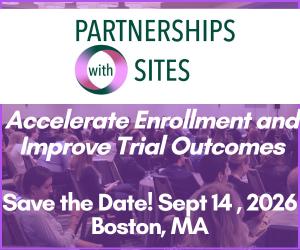Investing in Patient and Physician Engagement to Improve Access to Clinical Research
Irfan Khan, MD, is the Founder and CEO of Circuit Clinical, an Integrated Research Organization. Dr Khan shares his thoughts on how we can engage stakeholders across the clinical research community to improve patient access to clinical research as a care option.

How do you engage the different stakeholders around integrating clinical research as a care option?
Fundamentally, it’s a question about value. CRAACO (Clinical Research as a Care Option) resonates when every one of these stakeholders is clear on the value. It cascades from value for patients. We in this community sincerely believe that research access is a health equity issue. Being able to provide research where people get their care is maximally convenient and creates a new opportunity for people who are in serious conditions that are poorly treated or are looking for new options and a better quality of life. That convenience for patients by meeting them where they are is incredibly valuable.
"We live in an era where there’s a tremendous amount of physician burnout. We are at an all time record of physicians between the ages of 25-40 leaving medicine"
Once you’ve established the value for patients, how do you engage physicians?
Very tightly coupled to patient value is physician value. We live in an era where there’s a tremendous amount of physician burnout. We are at an all time record of physicians between the ages of 25-40 leaving medicine. Meanwhile, our existing Principal Investigator base is aging out and getting ready to retire. You can see this as a problem or as an opportunity to bring in doctors in a way that is more gender balanced and more racially and ethnically diverse. Burnout happens when you’re doing the same thing day in and day out without any kind of relief. Offering real practice diversification opportunities can be a cure for that because it brings something novel and interesting that brings them back to their training days about being part of the advancement of medicines, it creates new value to their patients and it’s a revenue stream.
What about the health systems and study sponsors?
I think it’s really about nailing the value for patient and physician stakeholders. If you get that done, then it’s very straightforward to explain to a health system that this can make you more revenue and attract and retain new providers. Recruiting more doctors is maybe the single hardest thing for health systems and physician groups to do these days. So to offer them to still be part of this research element even as they move out of academia is incredibly meaningful and improves retention. And then I think it’s about talking to them about brand elevation. Patients see places that do research as offering a different, more enhanced version of care than places that don’t.
If we do all that, the cascade towards our friends in the CROs and pharma happens naturally because they get the opportunity to address the majority of the US healthcare infrastructure that exists outside of academic medical centers and bring them into clinical research. I think the next question would be around solving for the challenges of bringing clinical research to new settings but the value for pharma in that you’ve solved a delivery problem is there.
"We need to be careful that it’s not just musical chairs where we pull out the foundation stones of American drug discovery"
How can the clinical research industry reduce that burnout while also attracting a more diverse workforce to conduct this research?
The key to reducing burnout as it exists is to leverage into some of the technologies that are looking to automate what can be automated and save expert research minds for the work that can’t be automated. I get very excited when I see things like Medidata’s new EHR to EDC. That, to me feels like something new in the space that would take a lot of the work off of the research assistants and research coordinators and make the job more fun, because they could focus on the interaction with the participants making sure they are creating amazing experiences, which they all really care a lot more about than paperwork.
More broadly, we need to be careful that it’s not just musical chairs where we pull out the foundation stones of American drug discovery. The idea isn’t to simply hire all the staff from the academic universities because then the key opinion leaders and thought leadership and first-in-human studies can’t get done. I think the solution can be found in other industries: bring training opportunities and investments into clinical research. I think ACRO and SCRS have done a great job of highlighting this and creating opportunities, scholarships, fellowships, engagement at every level of the educational cycle and research. And then the very large high scale site networks – including us at Circuit Clinical – owe it to the industry to commit to training a new generation of coordinators, research assistants and investigators.
What does investment in authentic long-term community engagement look like?
Hospitals have set an example for us. If you look at high- scale health systems, especially Catholic Health System, what you see time and time again are massive investments in ameliorating the social determinants of health disparities. This includes food banks and pantries – where people actually experience food insecurity – all the way up to programmatic education on things like breast cancer screening. The Catholic Health Systems in particular have really shown us that there is both a deeply ethical and important reason to invest in community engagement.
There’s also a very practical way to do it. Whether it’s visiting churches in a given community to share education and be present or spending time at schools to tell the story of whatever health engagement you’re talking about. In our case, it’s clinical trials, but we can use the same playbook as those who speak about social determinants of health or improving health equity. If you ask these communities if they have ever participated in a clinical trial, they will describe the somewhat transactional and dissatisfying experiences they’ve had.
What can the industry do?
If you’re a top 20 pharma with a particular program or trial going on, you would generally look across the space and aim to be in these 15 cities and those sites and design your program that way. Then, as the needs of the sites evolve, the minute your program is done, you really don’t have a line item to stay there and stay engaged. It’s just a function of the way clinical trial budgets are done.
Integrated Research Organizations like Circuit Clinical intend to run dozens of trials in their communities and make them available in the coming years. To do that, we need to think about how we can provide value to these communities in a variety of ways. It may not be related to a particular clinical trial but could instead be about how we help the patients in this community to understand the opportunity? How do we support things that are important to this community? The IROs have an advantage because they think on a programmatic level. They’re not trying to do a single trial on the site. They’re trying to build and bring research capabilities and research opportunities.
How do we solve challenges where a physician might want to participate in more research, but that means more work and more time, especially with current burnout rates?
There has never been more asked of doctors than there is in this day and age. I think that gets lost in the shuffle sometimes between talking about optimizing electronic medical records and data queries, that medicine is still very much an altruistic work. I am personally passionate about talking to physicians more holistically across the country about this idea that while there may be many reasons to say no to research, choosing to participate would make medicine feel like it did back in medical school and fellowships where you were part of something that was both about seeing patients and evolving care plans but also advancing the science. Doctors are looking for experiences that light them up and research is one of those experiences. I am of the strong belief that research may actually be a cure for burnout, not exacerbate it.
What does it mean to build an industry-wide nimble clinical research infrastructure?
We all bring novel ideas into this space and we don’t know which ideas are going to be the best. It’s encouraging to have so many great teams bringing value into the space. The key to being nimble is to deliver a clinical trial in a little research environment with the same data security and clinical compliance that we experience in private, brick-and-mortar research sites. When we start to feel very confident about that, we can open up the huge blue ocean of the rest of the American healthcare infrastructure.
Nimble will look different depending on the size of the practice you’re engaging, the structure of physician compensation, the regulatory framework of the health system, etc. We need to take all of that expertise and deploy it as appropriate for each particular health system. Given the fragmented nature of American healthcare, this model may need to be adapted on a case-by-case basis.
For more information, visit circuitclinical.com.







